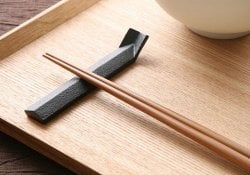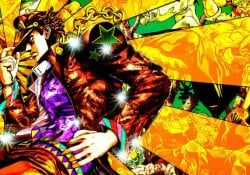5 yen coin, goen, Japanese equivalent to 15 cents is considered a symbol of luck in Japan and the world. because? In this article, we are going to examine some details of this coin and understand its meaning.
5 yen is a low-value currency, second only to 1 yen. It's also a hole-punched coin, perfect for making laces, keyrings, and other accessories. The coin is dated 1870 and its front depicts a rice that grows out of water. The composite elements on the coin represent agriculture and fishing which are key elements of the Japanese economy.
Read also:
Getting to Know the Yen – The Currency of Japan
Calculating the Yen in Japanese eyes! How to know if it is expensive or cheap?
Índice de Conteúdo
Why is the goen considered lucky coin?
The 5 yen coin is considered the lucky coin, simply because its pronunciation is the same as the word 御縁 (goen) which can mean destiny, opportunity, connection and relationship. So basically the coin 5円 is an object of luck in love.
Separately, the Kanji of the word 御縁 can mean:
- 御 - honorable, manipulate, rule, polite, humble, beautiful;
- 縁 - affinity, relationship, connection, edge, frontier, verge;
The First Kanji can be used as a prefix and suffix in some words. The second kanji is used in nouns and indicates a force or connection that binds two people together. Just because of this similarity of pronunciation between5円 and 御縁 thousands of people use the coin for luck in love and other important connections.
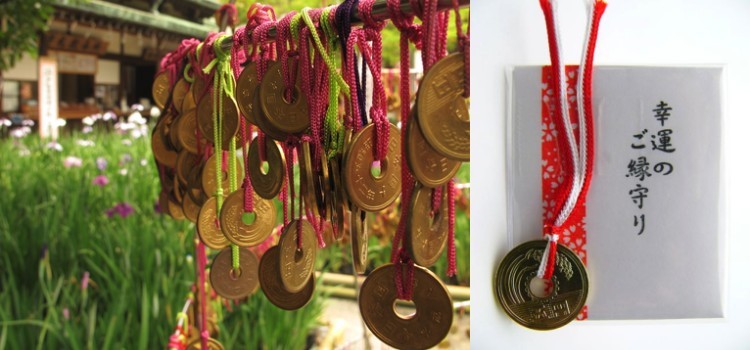
How is the 5 yen coin used?
In addition to being used as a symbol, in cords and accessories. These coins are given as donations at Shinto shrines with the intention of establishing a good connection with the shrine's deity.
Others throw these coins at temples in hopes of meeting new people who can bring them fortune, business, friendships or love. Some believe that the five yen coin should be the first to be placed in the wallet.
Others still believe that tossing the 50 yen coin that also has holes is five times as lucky as the 5 yen coin. Japan is full of superstitions because of the pronunciation of words, some even believe that the Number 4 and 9 are bad luck because of their pronunciation. This word is untranslatable. reminiscent of death (shinu) and ku reminiscent of suffering or black.
Others believe that the kit kat chocolate It brings luck because of its pronunciation that resembles kitto katsu which means "you will surely win" making parents buy chocolate for their children at the time of school exams. This and many other superstitions you can only find in Japan.
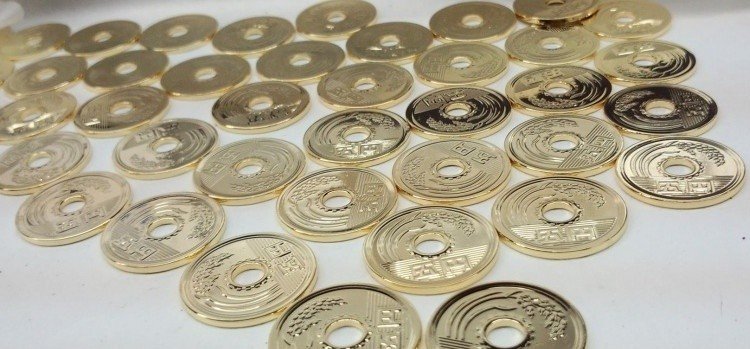
Why are 5 and 50 yen coins holed?
Many are curious about the hole in the middle of the japanese coins from 5 and 50 yen. Even if you ask most Japanese people, no one will be able to explain why there is a hole in the 5 yen and 50 yen coins. In this article, we will try to understand why there is a hole in the middle of Japan's currency.
Know that it's not just Japanese coins that have a hole in the middle. Several countries such as Norway, China, New Guinea and Denmark have already had or have pierced coins.
Rumor has it that the 5 yen perforated coin was originally created in 1948 because they needed to save the metals that became scarce after WWII. Originally the 50 yen coin did not have any holes, but it was very similar to the 100 yen coin. So they cut a hole in the 50 yen coin to help identify them. The holes in the Japanese currency are currently of great help to the visually impaired.
We came to the conclusion that in the past several coins from different countries had a hole in the middle to avoid counterfeiting and lower the cost of production. But with the advancement of technology, several countries have abandoned the practice of making holed coins. Few countries other than Japan currently have a hole-punched currency.
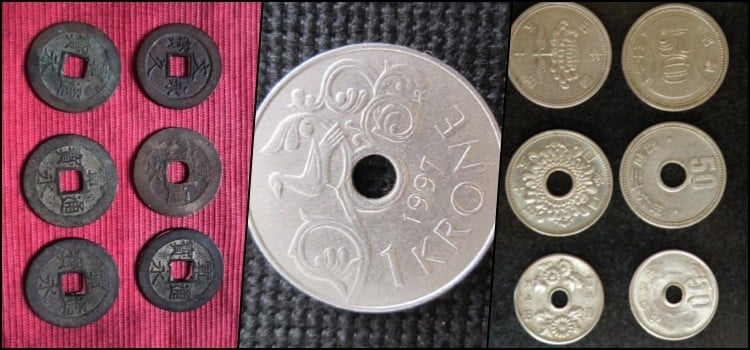
Explaining in depth why coins are holed
Although we know the main reason why the 5 and 50 yen coins have a hole in the middle, there are still many doubts about the origin of the holes in the coins. That's because more than 1300 years ago there were several Japanese coins with a square hole in the middle, even during the Edo period (1603 - 1868).
China may have influenced Japan's holed coins as it has influenced much of Japan's history and culture. There are theories that the circle on the coin represented the universe and the square in the middle of the coin represented the earth. Thanks to this hole, the coins were tied to the waist, which facilitated transport and protected them from thieves.
The hole in the coin had several uses such as serving as buttons on clothes or making necklaces. Some were even used in the manufacture of weapons. In the past, coins were manufactured in a way that removing and separating them during their casting was very laborious, the holes in the middle somehow facilitated this process.
The hole coin has been around for thousands of years! So there are still doubts about who had the idea to pierce the coin and why? Was it just because of the cost and manufacturing difficulty? Or was it for practicality? What's your opinion?
See below for fun facts about the Yen:
The article is still halfway through, but we recommend also reading:
Danish coin doesn't have a hole in the middle?
Why the hell am I talking about Danish Coin in an article about 5 yen coins? A few years ago I created an article with that name, but when updating the Japanese coins so much, I decided to include this part in the middle.
A few years ago, looking at the reports of the Google Search Console from my site, I noticed that the old post about Why Japanese 5 and 50 yen coins are holed appeared multiple times, like, 200,000+ times for people who searched for “Which Danish coin doesn't have a hole in the middle".
The strangest thing is that even though my article appeared only on the second page when searching for “Which Danish coin doesn't have a hole in the middle”, still more than 1000 people entered the article about the holed Japanese coins. It may not seem like anything to you reader, but for me it was a totally strange phenomenon.
This phrase was consulted so many times that it appeared several times in the TOP 10 of keyword impressions on my website even though the article was located on the second page. So I thought, I'm going to honor this huge amount of research and write about it and also try to unravel this mystery.
It was on this occasion that I could see the luck that the 5 and 50 yen coins brought to my website… lol!
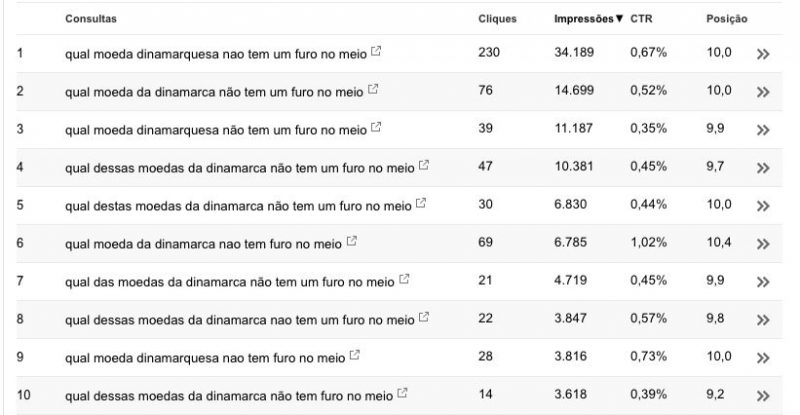
Although my Google Search Console shows that it has had over 200,000 monthly queries for this keyword, and over 40 variations of the phrase, the number could be much higher. Google's keyword planner suggests that the search is only 1000 to 10,000 people, although Search Console shows differently.
This exorbitant amount of searches for the phrase which coin from Denmark doesn't have a hole in the middle has only appeared in the last month, which is probably when my article about holed coins from Japan positioned itself on the second page for that keyword. I'm using a lot of technical terms that are confusing you, but I'm confused too.
Which Danish coin doesn't have a hole in the middle?
If you came from Google, please answer why you searched for that phrase. It is incomprehensible the abnormal amount of queries for this phrase appearing in my Search Console, which made me write this article and answer this question.
The name of the currency in Denmark is Danish Krone which is equivalent to 0.58 cents, and it is also used in Greenland. Its code is DKK and coins are divided into øre, where 100 øre equals 1 krone (Danish krone). There are 25 and 50 øre coins, as well as 1, 2, 5, 10 and 20 krone coins. The banknotes are 50, 100, 200, 500, 1000 kroner.
The only Danish coins that have a hole in the middle are the 1 krone, 2 krone and 5 krone. Both øre coins and those worth more than 5 krone do not have a hole in the middle and are beautiful. Maybe that's why you're looking for Danish coins without a hole in the middle, but what usually stands out about coins are the holes.
Sometimes I seriously think it's some sort of conspiracy or secret method to find some secret website. We're talking about 200,000+ monthly searches for that phrase. If it was something like Danish coins, krones and ores, but I'm talking about the phrase: Which Danish coin doesn't have a hole in the middle...
After a few years I found out why several people got into my article about 5 yen coins using Danish coins. This happened because of a TV show that asked this question… How powerful are shows…



